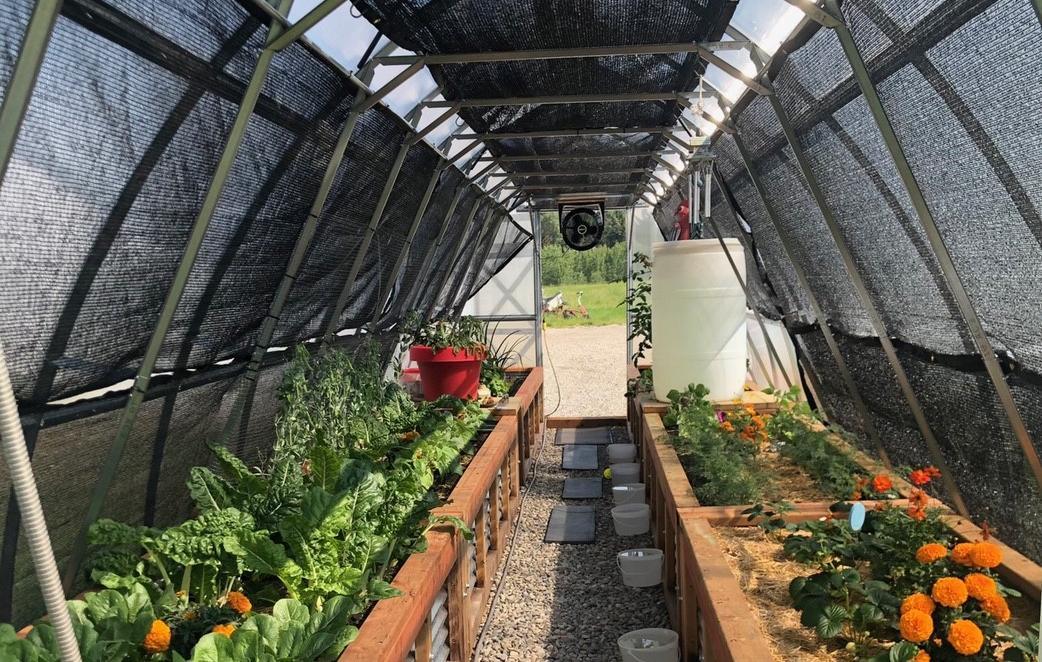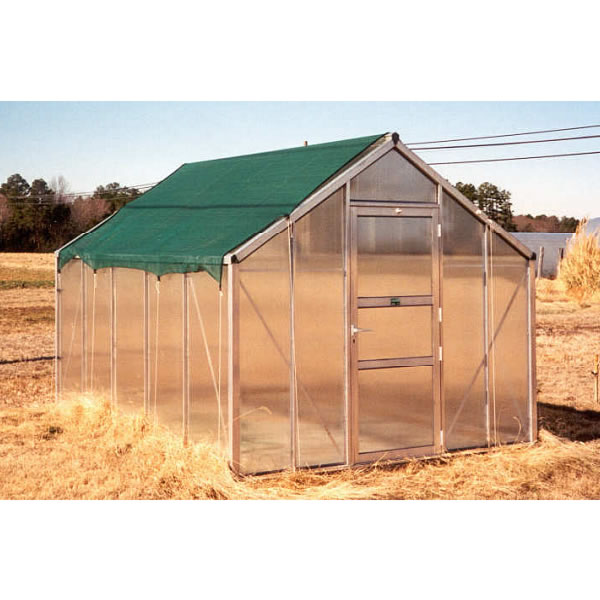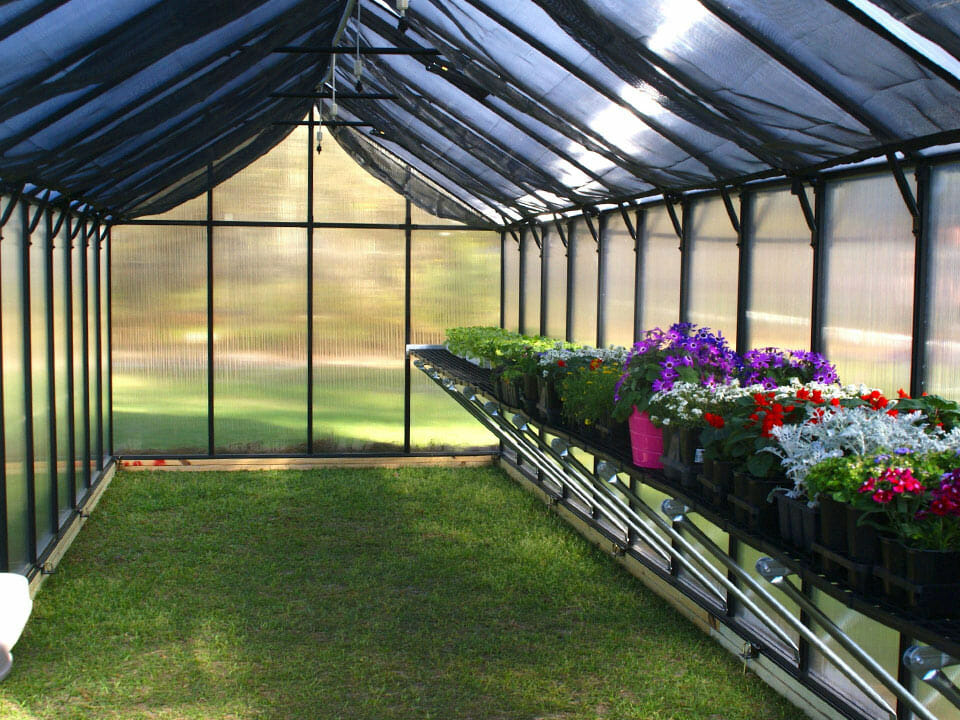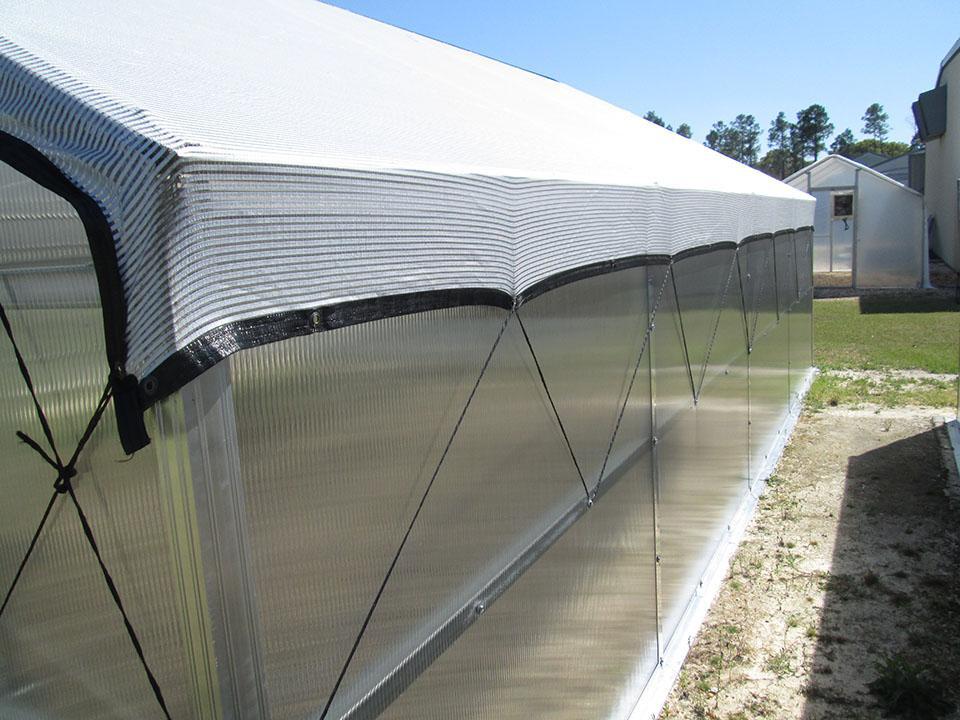Cultivating Comfort in Your Greenhouse Shade Cloth
I. Introduction
A. Harnessing the Power of Shade: Moderating Greenhouse Temperatures
Greenhouses offer a haven for nurturing plants year-round. However, excessive sunlight can disrupt this carefully controlled environment. Here’s where shade cloth steps in, emerging as a valuable tool for managing greenhouse temperatures, protecting plants from sun stress, and promoting optimal growing conditions.
B. The Role of Shade Cloth in Greenhouse Management
Sunlight is essential for plant growth, but too much can be detrimental. Shade cloth acts as a physical barrier, filtering sunlight intensity entering the greenhouse. This helps regulate temperatures, preventing overheating and ensuring a stable environment for delicate plants.

II. Understanding Shade Cloth: Types, Properties, and Applications
A. Woven Shade Cloth: Durable and Versatile for Greenhouse Needs
Woven shade cloth is a popular choice for greenhouses due to its strength and durability. Made by weaving polyethylene strands together, it offers various shade percentages, typically ranging from 30% to 80%. Woven shade cloth is ideal for regulating greenhouse temperatures, protecting seedlings from intense sunlight, and maintaining a comfortable environment for a variety of plants.
B. Knitted Shade Cloth: Lightweight and Breathable for Delicate Plants
Knitted shade cloth provides a lighter alternative to woven varieties. Its open-knit construction allows for greater airflow while still providing effective shade. Knitted shade cloth is often used for delicate seedlings, leafy greens, and shade-loving plants. The lighter weight also makes it easier to work with and drape over plants.
C. Shade Netting: Providing Partial Shade for Sun-Tolerant Plants
Shade netting offers the least amount of shade blockage, typically ranging from 10% to 30%. Woven from a looser mesh, it allows more sunlight to penetrate while still providing some protection from intense heat and glare. Shade netting is suitable for sun-tolerant plants that benefit from some afternoon shade or for areas within the greenhouse where partial sunlight is desired.

III. Selecting the Ideal Shade Cloth for Your Greenhouse: Matching Needs with Options
Choosing the right shade cloth for your greenhouse depends on several factors:
A. Assessing Plant Requirements: Determining the Appropriate Shade Level
Different plants have varying light requirements. Research the specific needs of the plants you’re growing. For instance, vegetables like tomatoes or peppers might require 50% shade, while ferns or hostas might thrive under 80% shade.
B. Considering Greenhouse Conditions: Evaluating Temperature and Sunlight Exposure
Assess the overall temperature and sunlight exposure of your greenhouse. Factors like location, orientation (north-facing greenhouses receive less direct sunlight), and ventilation influence the amount of shade needed.
C. Evaluating Light Transmission:
Ensure the chosen shade cloth allows sufficient light for photosynthesis. Plants still need sunlight to grow, so striking a balance between protection and light availability is crucial.

IV. Utilizing Shade Cloth Effectively in Your Greenhouse: Installation, Maintenance, and Tips
A. Proper Installation Techniques:
Secure the shade cloth using shade cloth hooks, shade sail clips, or a shade sail frame specifically designed for greenhouses. Ensure the fabric is taut to prevent wind damage and allow for proper water drainage from rain or condensation.
B. Regular Maintenance and Inspection:
Periodically check the shade cloth for tears, rips, or UV degradation. Clean debris and dirt accumulation to maintain optimal light transmission. Brushing off dust or hosing down the cloth can remove dirt buildup.
C. Additional Tips:
- Adjust shade levels as plants mature. Young plants might require more shade initially, while established plants can tolerate higher light levels.
- Ensure proper ventilation to prevent moisture buildup and promote air circulation. Shade cloth can trap heat, so adequate ventilation is crucial for maintaining a comfortable temperature.
- Monitor greenhouse temperature and adjust shade cloth accordingly. During cooler seasons, you might need to remove or partially remove the shade cloth to allow for more sunlight penetration.

V. Benefits of Using Shade Cloth in Your Greenhouse: Enhancing Plant Health and Productivity
A. Protecting Plants from Sun Stress and Scorch:
Excessive sunlight can cause sunburn, leaf damage, and stunted growth in plants. Shade cloth prevents these issues by reducing the intensity of light reaching the plants.
B. Regulating Greenhouse Temperatures:
Shade cloth helps maintain a stable and cooler greenhouse environment, reducing stress on plants and preventing heat-related problems like wilting or flower drop.
C. Extending Plant Life and Enhancing Productivity:
Protected plants experience less stress, leading to longer lifespans, increased flower and fruit production, and overall improved health. This can translate to higher yields for vegetables and fruits grown in your greenhouse.

VI. Applications of Shade Cloth Beyond the Greenhouse
The benefits of shade cloth extend beyond the controlled environment of a greenhouse:
A. Providing Shade for Outdoor Structures: Patios, decks, and play areas can benefit from shade cloth’s cooling effect, creating comfortable outdoor sanctuaries. Shade cloth can be attached to existing structures or supported by a shade sail frame.
B. Protecting Livestock and Animals: Shade cloth shelters animals from harsh sunlight, reducing heat stress and improving their well-being. This can be particularly important for poultry, rabbits, or other animals housed outdoors.
C. Creating Temporary Enclosures: Shade cloth can be used to construct temporary structures for events, construction sites, or protecting seedlings outdoors during harsh weather conditions. The versatility of shade cloth allows for various applications.
VII. Environmental Considerations: Selecting Eco-Friendly Shade Cloth Options
A. Choosing Shade Cloth Made from Recycled Materials: Many manufacturers offer shade cloth made from recycled high-density polyethylene (HDPE). Opting for recycled content reduces environmental impact by minimizing reliance on virgin plastic production.
B. Selecting Shade Cloth with UV Protection: Shade cloth exposed to sunlight can degrade over time. Choosing a shade cloth with ultraviolet (UV) protection extends its lifespan, reducing the need for frequent replacements and minimizing waste.
C. Proper Disposal Practices: At the end of its useful life, dispose of shade cloth responsibly. Some programs accept shade cloth for recycling based on the material composition. If recycling is not an option, consider reusing the cloth for other purposes like weed control or temporary shade structures.
VIII. Conclusion
A. Shade Cloth: An Essential Tool for Greenhouse Success
Shade cloth plays a pivotal role in greenhouse management, ensuring a favorable environment for plant growth and productivity. By understanding the different types, selecting the right option for your greenhouse, and utilizing it effectively, you can create a haven where your plants can thrive.
B. Cultivating a Sustainable Approach: Opting for shade cloth made from recycled materials and ensuring proper disposal practices contribute to a more sustainable gardening approach.
IX. Additional Resources
A. Online Resources for Greenhouse Shade Cloth Information: Websites and online retailers offer comprehensive information on various shade cloth types, shade percentages, and application tips specifically for greenhouses.
B. Greenhouse Supply Stores and Local Nurseries: Greenhouse supply stores and local nurseries can provide valuable advice on shade cloth selection and installation based on your specific greenhouse setup and plant varieties.
C. Greenhouse Gardening Associations and Online Communities: Connecting with greenhouse gardening associations or online communities allows you to learn from experienced growers and share knowledge about best practices for using shade cloth in your greenhouse.